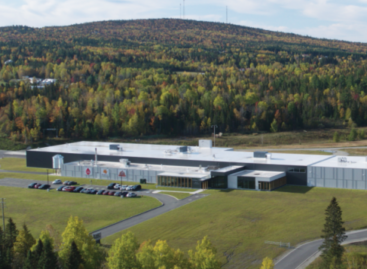The aflatoxin load of Hungarian consumers was examined by Nébih specialists
The University of Debrecen and the National Food Chain Safety Office (Nébih) participated in a joint project entitled: “Determining the short-term and long-term aflatoxin exposure of Hungarian consumers in the dairy product chain and establishing risk management measures”. The specialists determined that the domestic population is not currently threatened by a significant health risk from aflatoxin. Although immediate countermeasures are not necessary, continuous monitoring of feed and food for possible aflatoxin contamination is still justified and recommended.

One of the consequences of today’s climate change is the northward spread of aflatoxin-producing molds in Europe. This may endanger the population of countries with a moderate climate, including our country. Aflatoxins are mycotoxins that cause cancer and weaken the immune system, which are especially dangerous for young people. Among these mycotoxins, aflatoxin B1 (AFB1) is transformed in the liver into aflatoxin M1 (AFM1), which is also carcinogenic and appears in cow’s milk and in dairy products. Based on the results of the national excellence program examining aflatoxin exposure (identification number: NKFIH 2018-1.2.1-NKP-2018-00002), the Hungarian population does not have to fear a significant aflatoxin risk for the time being. However, it is still essential to check feed and food in order to filter out possible contamination. Nébih performs the inspection of 130 milk samples and 200 feed samples at several points of the chain during the Integrated Multi-Year National Control Plan.
During the project, specialists from Nébih and the University of Debrecen determined an action threshold for the AFM1 content of milk (>0.02 μg/kg)
Based on EU Regulation 2023/915, the AFM1 limit for milk is 0.050 μg/kg. When the action threshold was reached, the project participants implemented an action plan, with the help of which they succeeded in reducing the toxin content of the milk below the threshold. The result above the threshold value indicated that the daily milk production of dairy farms with a higher than normal level of toxin content was mixed into the daily mixed milk. Based on this, in the following period, individual sampling and a review of the self-control system were carried out at each site. In the case of the colony where it was proven that the feed was contaminated, it was ensured that the high toxin level was reduced to the normal level again by means of a toxin binder or by changing the feed.
In addition, based on the project results, a proposal was made to amend the official aflatoxin monitoring plan
As a result of infection experiments and micrometeorological measurements of micro-parceled Aspergillus flavus (one of the most widespread aflatoxin-producing molds), it was found that the spread of the mold was significantly influenced by temperature and atmospheric dryness. The aflatoxin production was determined by extremely high daily maximum temperatures (especially above 35oC). According to the project’s experts, their microplot experimental results can contribute to the creation of a risk assessment model for Aspergillus flavus development and toxin production that takes into account the characteristics of the Carpathian Basin.
In the project, significant analytical development was also carried out in order to quickly and accurately determine the AFB1 content of silage feeds and mixed feeds. Furthermore, using metagenomic and microbiological breeding methods, they obtained a comprehensive picture of the bacterial and yeast composition of domestic feed for the first time.
Nébih
Related news
Nébih imposed a fine of more than HUF 3 million on beach buffets and street food vendors
During the summer seasonal inspection of beach buffets and places…
Read more >Nébih: few mistakes in summer camps
Compared to the number of inspections, the food chain safety…
Read more >Nébih continues to develop eGN during the summer
The development work concerning the electronic Farming Diary is ongoing…
Read more >Related news
Valeo Foods Completes Acquisition Of Appalaches Nature
Valeo Foods Group has completed the acquisition of Appalaches Nature,…
Read more >Carrefour grows in France and Brazil, lags behind in rest of Europe
Carrefour says it is rather pleased with its financial results…
Read more >Food and beverage innovation plunges nearly 50% since 2007: Mintel
The market research firm said about a quarter of items…
Read more >







